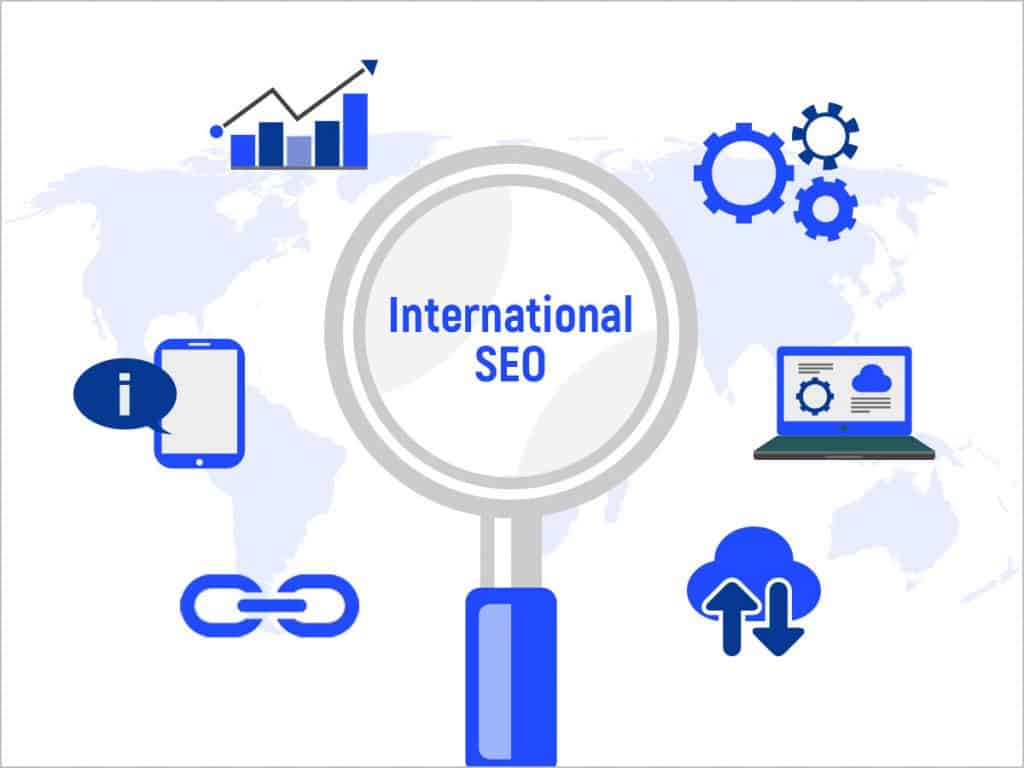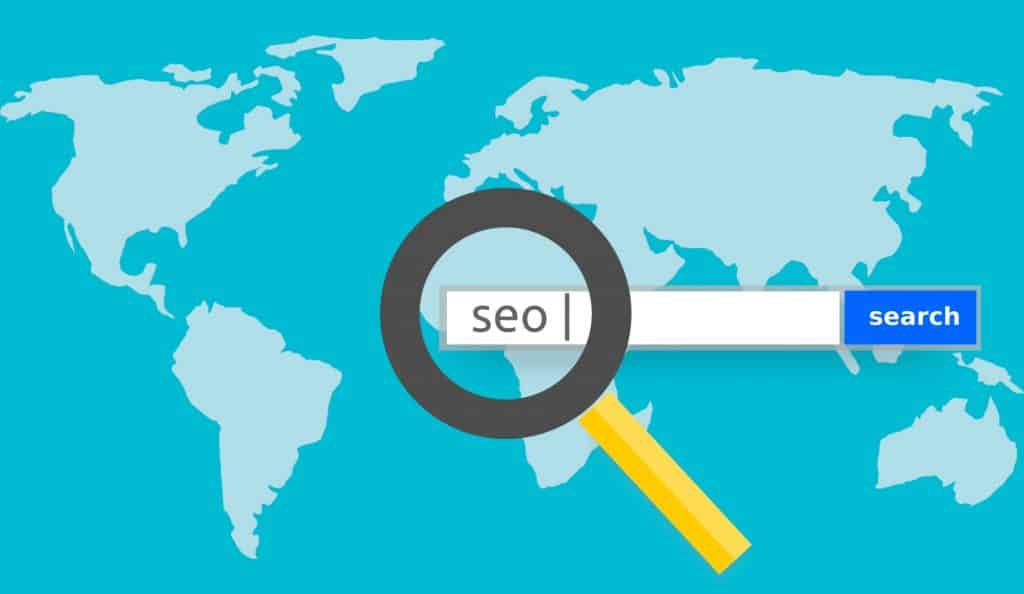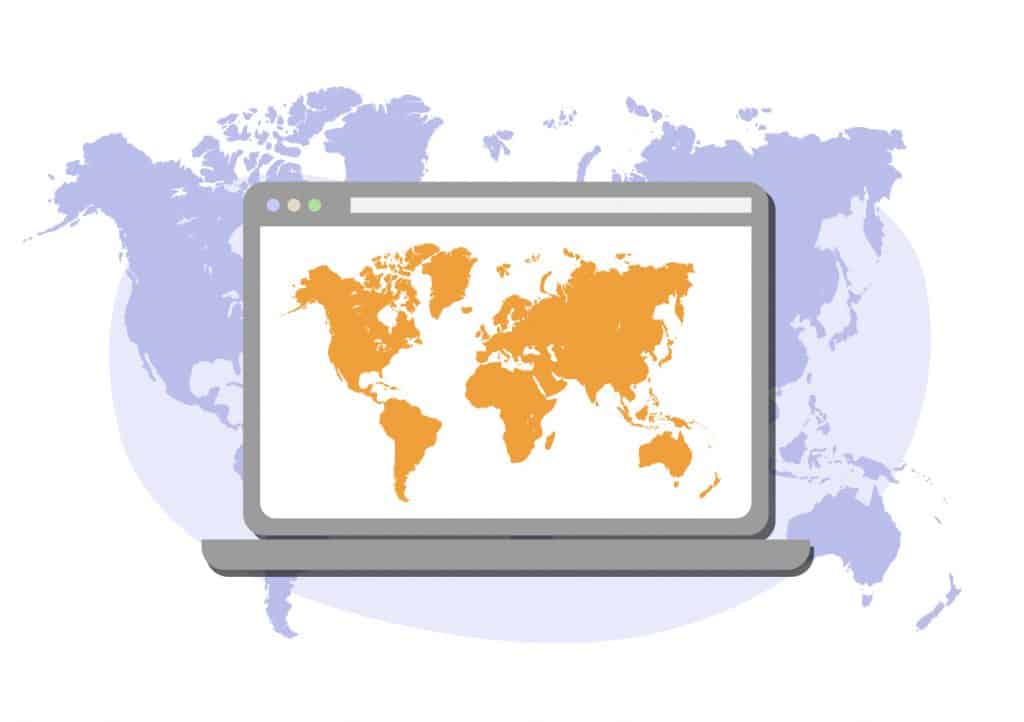What is International SEO?
You know that you need to do various SEO studies to reach your target audience. So, do you need to do these studies in the international arena, at the local level, or at the national level? In other words, should every project devote time, energy, and budget to international level of search engine optimization? The answer to this question may confuse you a bit. Because in general, the target audience of your project, the product or service you offer, and the market area you want to compete in determine the answer to this question. After all, if you own a burger shop in the back streets of New York, you don’t need international SEO much. But if you are a multilingual blog site or an e-commerce site that sells internationally, you may need certain optimization suggestions.
Today we’ll take a look at the best search engine optimization ideas based on the opinions of Screpy experts. We will talk about what you need to do to stand out at the international level and to get ahead of your competitors by addressing your target audience in different locations at the same time. After getting the manual optimization suggestions from our blog content, use Screpy to have your site crawled automatically with the AI-based tool. Screpy crawls each page of your website separately for SEO, page speed, or SERP ranking. In this way, the target audience-oriented optimization process of your pages is completely under your control. It tells you technical, contextual, or design problems on your site as AI-based system warnings. Moreover, optimization types on how to solve each problem are presented to you in tasks. This is exactly why Screpy is used as a great tool for local SEO or international SEO.
If you are ready, let’s start to examine what international SEO is and what types you can follow to be a pioneer in this field.
Try for free to boost your website traffic!
The Definition of International SEO
First, let’s take a look at what international SEO means. This optimization process is all of the actions you take with the aim of addressing people who are located in different parts of the world and speaking different languages at the same time and coming first in front of them on the SERP. Several methods can be used for this:

- Geotargeting
- Hreflang tags
- Other localization signals
- Target-oriented contents in different languages
With such methods, you can tell Google and other search engines that you can provide a powerful and effective service to people speaking different languages in different geographies at the same time.
What distinguishes International SEO from other optimization efforts is basically this: It is very important for Google to organize the search results in the way most relevant to the searcher’s language and location. If you place the right clues on your website that you are presenting results related to this person’s language and location, you will increase your chances of ranking in Google’s “most relevant results”. This will mean exactly “international SEO”.
Why Do You Need International SEO?
So, do you need International SEO? Or, let us ask the question: Why do you need International SEO? Here are a few important nuances:
As a result of your detailed analysis, did you notice that you received visitors from different countries while examining your traffic sources? This means that you can address people who speak different languages and are in different locations at the same time. In that case, various changes you will make on your website can enable individuals in different locations to have even stronger experiences and provide Google with information about the breadth of your target audience.
So, what are the most basic international SEO requirements? Here are the three basic vital principles of this business:
- First of all, you need to have an internationally compatible URL structure. You can specifically target countries with various extensions you add to the end of your URL.
- You should then use language tags to be able to target language. This is a very important requirement. You need to tell search engines which languages your pages are targeting and in which language queries can be shown as a result.
- Finally, after determining these basics, you need to produce as much user-oriented content in different languages as possible to strengthen your hand and be ready for battle. Regular content sharing will give search engines a very important message that it is up-to-date and useful.
Test Your Website Issues
You can quickly analyze your site
4 Basic Steps for International SEO
We will talk about four different steps you need to follow in order to make your site visible in the international arena and to be able to speak different languages and appeal to visitors in different locations. If you’re ready, let’s start the review.
Decide What Kind of Content You Will Publish Internationally
We know that you want to appeal to large audiences in a certain area and that you want to gain popularity in a short time in this way. But what type of content will you serve to people?

The answer to this question is important. Because when applying international SEO, you can use language-based targeting, geo-targeting or both. For example,
- Facebook performs language-based targeting by allowing users to choose a language on its service pages.
- Another international company, Air Canada, wants users entering the website to select language and country via a pop-up. After this selection, the site automatically calls the specified URL.
- Ebay is one of the companies that target both language and location. This platform, which provides services for a total of 23 different countries, aims to appeal to a large number of people with many languages.
Now, being able to do international SEO means translating your content into as many different languages as possible. So first determine what kind of content you will share, then translate that content, and then decide whether to direct people by location, language, or both.
If you are not sure which countries or languages you want to optimize for international SEO, review your web page’s traffic sources by location. As a result of this review, you will easily see from which countries you receive traffic. Accordingly, you can make the few countries where you get the most traffic as the first steps of your international SEO plan. Grow step by step to do better and achieve the best by appealing to a wide audience. It’s that simple.
Make The URL You Have International-Friendly
If you want to do international SEO, you will need to provide an international-friendly URL for Google to show you to searches in different countries. It is important to have subdomains and website versions compatible with official internet extensions of different countries when geotargeting. It also seems like a necessity to use the hreflang tag to target the language.

So, what options do you have? We know that some businesses set up a different website for each targeted country and add a subdirectory from the existing website to these alternative sites. While this can be a somewhat cumbersome way for SEO and to prove site authority to Google, it can make sense to keep things organized. Let’s take a closer look at the URL strategies you can adopt for international SEO:
Using Subdirectory for Each Country You Target on Your Main Website
A great option for business companies that operate in multiple countries and want to maintain their presence on a single website, this method may offer weaker SEO than the idea of building a completely new site, as it targets location via subdirectory. But hey, each method has advantages and disadvantages.
Here’s the advantage: If you target a location based on subdirectories, keeping your website under control, periodic maintenance and setup will be much easier than you think. Because it all takes shape on your existing site. In addition, the cost you have to pay is reduced because you get all your work done through a single website domain name.
Setting up a Separate Website for Each Location Targeting
Another option you can choose for URL optimization for International SEO is of course to set up a different website for each country. Of course, this method has its advantages and disadvantages. But let’s say who prefers this method in general: it is a good method especially for large business companies that will host many resources and services on their site. Because if we are not talking about a large amount of files that require a large number of websites, it would be really unnecessary to maintain each site and get a special domain name for them. When it comes to China, things change. Companies targeting China must use a domain with cn. Because otherwise it becomes quite difficult to rank on Baidu.
So, what is the main advantage of this method?
Although it is much more expensive compared to other methods, opening a separate website for each country is the easiest way to rise in international SEO. Google likes to see a specific website that directly addresses the relevant location and it is easier for Google to rank the relevant site better if it is seperate from other country-related domains.
Hey, we definitely don’t recommend this method to relatively small companies. Because if they do, they will unfortunately have to bear the costs much more than necessary. Moreover, a large number of sites will mean the need for much more staff and tools for maintenance and monitoring.
Using Subdomains: Not Recommended
Although it is not used much by international SEOs and it is disadvantageous, the use of subdomains is also among the options. It is possible to direct people to them by creating a subdomain for each country on your website. True, in theory you have such a chance. However, the disadvantages faced by those who prefer this method are really many.
First of all, choosing a subdomain gives the search engines a much weaker signal that you are targeting the country in question. Generally, search engines are interested in the main domain, so subdomains can be a bit more difficult to rank. Google’s official statements say that subdomains and main domains have equal ranking chances. But numerous field studies underline that this is not quite the case. Moreover, when it comes to authority, too many subdomains can weaken the power of the main domain name. Moreover, subdomains are not free, folks! You will also have a certain cost for each subdomain.
Well, although it’s easier to control, the damage done by using subdomains is definitely not worth the risk. Therefore, if you want to achieve a strong international ranking, we strongly recommend that you do not choose the subdomain method.
Language-Based Targeting for International SEO: Hreflang Tag
If you want to target language specific, you will need to use various code snippets in the search engine optimization process. Usually, search engines show the version of your website in the relevant language, according to the language used by the queryers. In addition, a language menu that allows you to do this manually after entering the site is usually located at the bottom of the sites. At this point, it will be easier to appeal to your audience, as each of the users sees content according to the search engine language they use.

Google often uses the following tips to understand the user’s search language:
- Examining the keywords that the user typed in the search bar
- User’s search history
- User’s location
- The Google domain used by the user (for example, google.tr or Google.de may be used)
- User’s settings (Users may have set a different search settings from their location. For example, someone living in the USA may have set their search results to be France-focused and want to see in French. In this case, the results will be listed as well)
So how does language-based targeting have anything to do with all this? Let’s put it this way: You need to use hreflang tags when you want to translate subdirectories and subdomains of a particular content on your site. Thanks to these tags, page versions with different languages stand out in the search results, making it easier to reach the target audience.
How to user hreflang tag for international SEO?
So how are you going to use the hreflang tag? Think of it this way. The content you want to market internationally is actually a translation of English pages. This means that you have multiple different versions of the English-language page, and each of these versions can compete with each other in search engine results. This competition makes it harder for essential content to stand out because authority is split between several different site versions and the strength of your main content is diminished.
To avoid exactly this problem, we strongly recommend that you add the hreflang tag next to the URL on your website. In this way, you protect the authority by preventing the page from competing with its own different language versions. Only the necessary page will appear in the international SERP ranking, while the others will not lose anything from their authority. Here is a great solution for your site! Due to the ease of use of the hreflang tag, many people prefer to do international SEO with language targeting.
It is possible to say that there are two different components in a standard hreflang tag:
- Mandatory: The language code (using ISO ISO 639-1 codes)
- Optional: A country code (using ISO 3166-1 alpha-2 country codes)
So, what kind of companies can do language targeting and appeal to international target audiences with the hreflang tag? Let’s put it this way: Apple, as a world-famous company, is one of the examples that does international SEO with the hreflang tag. You can easily see this when you look at the source code of Apple’s site.
The main purpose of the hreflang tags used is to determine the details of each user’s language and country and to serve them accordingly by placing them at the end of the URL. For example, as you can easily see in the example, if en-US is written in the tag, the relevant page version is for those who visit the site from the United States and want to access the English content. Such details ensure that the site can easily appeal to its target audience with a language-based filtering.
Bonus: Details About X-Default Hreflang Tag
Let’s make a small note: When users enter your site, a pop-up that welcomes them on the main page may ask them for their location. In addition, without asking users, your website may automatically redirect your users to the relevant pages by looking at the Google settings. Remember what happened in the Air Canada example: we were asking users for information with a pop-up, and then performing the URL redirection based on the information they provided. In such cases, you may need to use the x-default hreflang tag.
Bonus 2: Where to Place Hreflang Tag
If you understand the general functions of the hreflang tag, but don’t know exactly where to place it, we have good news for you. Here are your alternatives for it:
- If you wish, you can add it to the source code of the title on each page. This is the most preferred method.
- You can place it in the HTTP header on every page if you wish.
- It’s also a good idea to place your hreflang tags directly in the sitemap.
- Any of these options will work for you. But use only one of these options. You don’t need more.
Try to Give Search Engines More Tips for International SEO
So far you have fulfilled the basic requirements of international SEO. But you know you need more than that to stand out, right? Because you have many competitors doing what you do, and your main goal should be to get ahead of them. In order to be more visible in search engines, you need to pay attention to the localization of the content according to the countries you specify, and make sure that you do enough content sharing & optimization & marketing for each country target. Otherwise, you’re not giving Google enough signals to stand out.
So how will you do this?
- First of all, we recommend sharing as much content as possible in the languages you specify. But while doing this, do not set the content requirements only according to Google. Okay, Google is home to 92 percent of general internet usage. But if you are addressing China in the international market, it may not make much sense to follow Google. Because there is the search engine Baidu and you need to optimize by keeping up with it. When it comes to Yandex, it might make sense to look at your metric scores in Yandex, especially when you focus on Eastern European countries.
Actually, it’s not that complicated, because in general, search engines ask you for similar things. However, it may make sense to focus on specific search engines for specific targeting.
- Another point is related to the devices used. People may be connecting to your page with different device types. You should make sure your pages are accessible for both desktop and mobile device types. While approximately fifty percent of worldwide searches are made entirely on mobile devices, one of the most important conditions to stand out in search engines is to have mobile-friendly pages. If you want to learn more about the subject, you can take a look at our mobile-first indexing content.
In general, the summary of what you can do in international SEO to give the message that you are a strong resource to search engines is as follows:
- Prefer to host your site on a local IP based on your target location
- Help search engines understand your language by linking to lots of local content
- Strengthen the signal you want to give as a backlink owner from local sources.
- If you are targeting China or Russia, always follow other requirements for Yandex and Baidu.
It’s that simple. You are now ready for international SEO!
FAQ
How can I improve my international SEO?
For this, follow the steps below:
Identify who the target countries are.
See who your local and international competitors are in each local market.
Identify the keywords to focus on by doing international keyword research.
Do branding studies so that your brand can be prestigious at the local level.
Fulfill the technical requirements.
Keep sharing content
How do I get international traffic on my website?
For this, note the following:
web hosting server location
backlinks
internal linking in content (in relevant languages)
local SEO
domain name extension
do geo-targeting while working through the Google search console
language targeting with hreflang tags
perform content level targeting.
if you want to appeal to regions that use different search engines, understand the demands of the relevant search engines.
How can I reach the international audience?
First, diversify and market your products to appeal to different local markets.
Then recruit the necessary people to create the international perspective in your team.
Being able to do strong work in different languages first requires overcoming the language barrier. do this.
Use different search engines correctly in marketing processes.
Analyze your different competitors in foreign economies.
How do you do Multilingual SEO?
It will be the first step of multilingual SEO to translate your existing content according to the language used by other countries you target and to prevent your page from competing with its own versions with the hreflang tag you use on your main page. In this process, it is extremely important to use the right keywords, meta tags and title tags with the right technical and semantic features. While translating, aim to include keywords in the content instead of relying directly on the main text.
Why international SEO is important?
Because if you are addressing individuals in different locations, you have to use the multilingual geo-target method to be visible in the relevant queries. Otherwise, you cannot show search engines that you are addressing people living in that region and your products will not be purchased by individuals in these countries.
Test Your Website Issues
You can quickly analyze your site